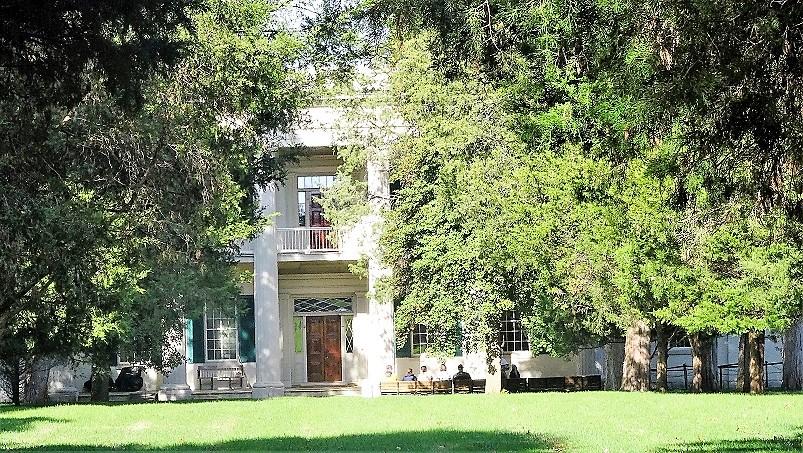


|
|
||||||||||||||||
|
|
||||||||||||||||
|
|
|||
|
|
Nashville The Hermitage, Home of Andrew Jackson 
The site that is The Hermitage was purchased by Andrew Jackson (1767 – 1845) in 1805. A 425-acre farm which was to become the home of the Jackson Family. The First Hermitage buildings were constructed between 1798 and 1800 prior to Jackson purchasing the property from Nathaniel Hays who claimed the property as a land grant in the early 1780’s. This building served as Jackson’s original farmhouse. It was converted into slave quarters when Jackson built the mansion at The Hermitage. This original farmhouse building has been renovated and can still be seen. The first house on the present site was built between 1819 and 1821 on two stories and contained eight rooms, four on each floor and it had two wide centre halls. The ground floor contained two parlours, a dining room, and Andrew and Rachel Jackson’s bedroom. On the upper floor were four bedrooms. The kitchen was located in the basement. During his time as President (from 1829 to 1837), Jackson carried out a major renovation redesigning the house and adding adjoining one-story wings, a two-story front portico with ten Doric columns, and a small rear portico. This created a 13-room mansion in the Classical style. In late 1834 a fire severely damaged the house and necessitated its rebuilding. The front façade was designed to look like a Greek temple with six, two-story columns with modified Corinthian capitals across the front porch. The front façade columns were made to have the appearance of stone by adding a sand coating. The furnishings were replaced with Philadelphia Classical style pieces, and when the house was completed in 1837, the Hermitage mansion was one of the most fashionable houses in Tennessee. With its sweeping driveway with red cedars lining either side, it was designed to create an impressio In 1889 the Hermitage opened as a museum and is considered one of the best-preserved early U.S. presidential homes and allows visitors to see the building as it was in Jackson’s time. Between 1989 and 1997 the building underwent major restoration and today it contains the original furniture, wallpaper, and family possessions returning it to what it would have been like for Andrew Jackson and his family in the years following his retirement and up to his death in 1845. Photography is not permitted in the house itself, nor can visitors enter the rooms, which have been carefully preserved to present the most accurate representation of its appearance during Jackson’s life and feature original furnishings and belongings. Entry to the mansion is from the front porch into the entrance hallway, which is decorated with beautifully printed scenic wallpaper. Leading from this is a grand staircase with the busts of two of Jackson’s cabinet members. On the ground floor is the dining room which is located off the hall with access via a covered passage to the kitchen. There are also two parlours containing mementos of Jackson’s life. Personal effects are also to be found in his bedroom, as in his final years he suffered from bad health and virtually lived in his bedroom. Across from this room is the bedroom of his adopted son, Andrew Jackson Junior who inherited the Hermitage on his adopted father’s death, where he lived with his wife Sarah. From the entrance hall, the stairs led to the upper floor and a further 4 bedrooms. Adjacent to Andrew Jackson’s bedroom is the Library where during his retirement, he spent much of his time. Adjacent to the bedroom of Andrew Jackson Juniors is the office which was an essential part of the Hermitage as it was in fact a plantation of 1050 acres growing mostly cotton. While Andrew Jackson was away his son ran the business from this office. In the surrounding area are a number of outbuildings and the cottages used for housing the slaves and includes Alfred's cabin, one of the slaves. The site is one of the nation’s oldest and largest historic site museum explaining the life of Jackson and exhibiting a number of his personal effects associated with his time in the army, for which he is most famous for his victory over the British at New Orleans. The items also cover his time as the 7th President of the United States. The site also has a café and a souvenir shop. Details related to visiting the Hermitage can be found by visiting the Official Site. Visit Official Website |
|
|
|
|
|||
All Photographs were taken by and are copyright of Ron Gatepain
| Site Map |